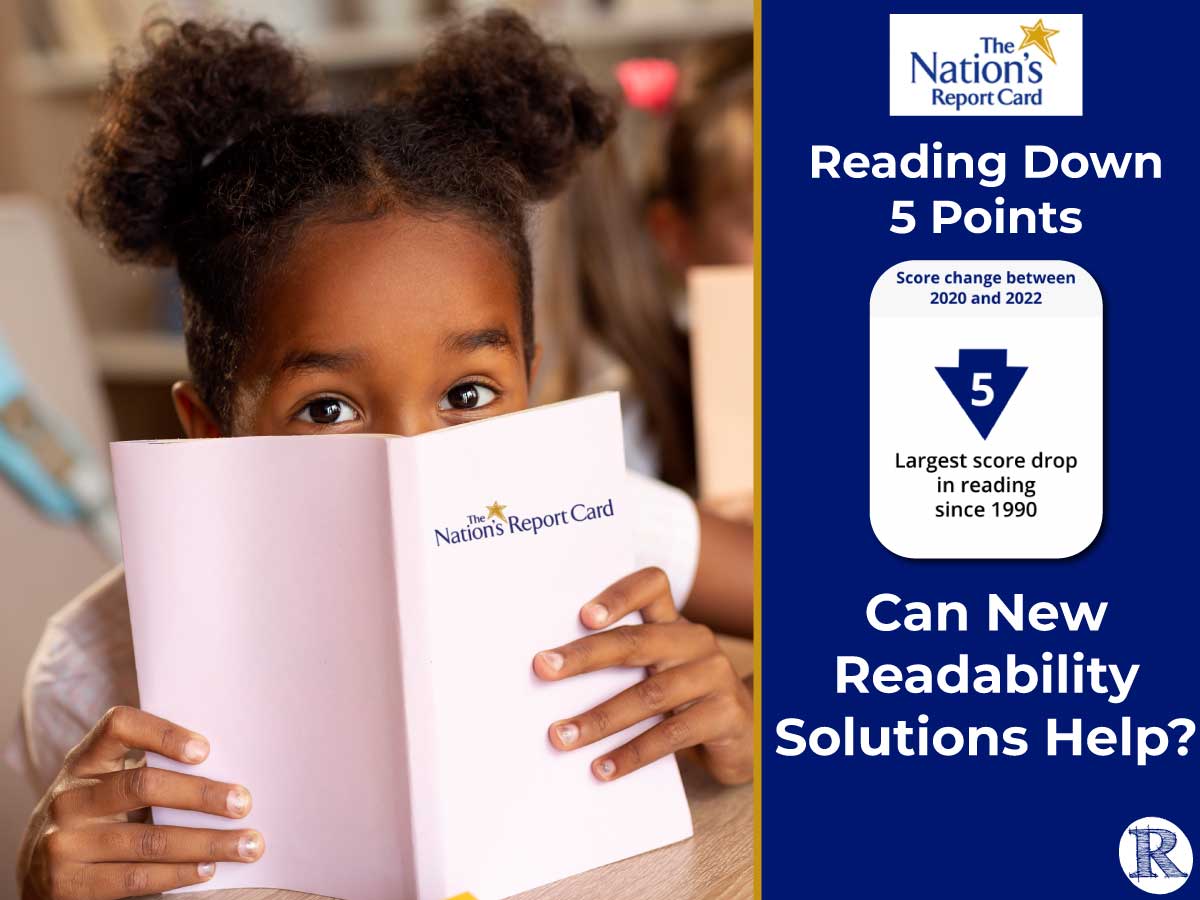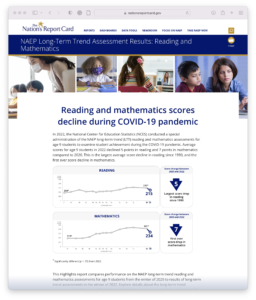Pandemic Erased 2 Decades of Progress in Reading
Released this week, national test results show the pandemic’s devastating impact on American school children. The results come from the first federal assessment of how student learning was affected by interruptions in education. The discouraging results show that two decades of gains were lost. Importantly, losses are most significant for the lowest performing students; their scores declined more than scores for higher-performing students. These students face monumental challenges in recovering lost learning.
The “Nation’s Report Card” testing was implemented by the National Assessment of Educational Progress (NAEP) to track student achievement over time. Nine-year-olds are frequently studied due to the critical point in their learning. Achievement at this age is predictive of future educational success. This year’s math scores fell for 9-year-old school children for the first time since the testing began in the 1970s. Reading scores dropped by the largest margin in more than 30 years.
Miguel Cardona, Secretary of Education, discusses the NAEP results in a USA Today Op-Ed. “It shows that we cannot be complacent about accelerating our students’ academic outcomes.” He argues that we must develop effective strategies to reduce the learning losses caused by the pandemic.
“We must recognize this moment for the urgency it carries: Our students – and the progress of our country – depend on it. “
– Miguel Cardona, Secretary of Education
New Solutions: Can a Simple Change to Text Format Improve Student Learning?
Classroom technology provides many opportunities for personalized learning and has moved our schools from a single approach to one tailored for each student, allowing students to learn at their individual levels.
Expanding this model to include personalized reading format solutions offers demonstrated benefits to students. Children learning to read and older students reading to learn all benefit from apps and websites offering readability feature changes. Just as reading performance can be enhanced by a simple change to text size with a pinch and zoom, additional features (including the addition of inter-letter spacing, character width expansion, line spacing adjustments and more) can be used to improve reading experiences. The outcomes of these changes can be measured in changes to reading speed, accuracy and comprehension.
Insights from a new body of Readability research will inform the design of better learning applications. Stay up to date on the improvements to reading speed and comprehension available with personalized reading solutions:
- 2021 research on school-aged children was presented at the Society for the Scientific Study of Reading (SSSR) annual meeting.
- Lightning Learning at Skoll World Forum: Field Testing Readability Changes in Adult Education and K-8th Grade Readability Comprehension Study
- The link between literacy and student engagement is explored by guest author and educator Michael Hernandez: Literacy and Student Engagement: Removing Barriers To Bring Joy Back To Learning
- Adobe Reader’s Liquid Mode delivers better digital reading experiences for all students
- Studies investigating reading are planned by The Readability Consortium with the goal of improving student learning.
Tech and edTech companies interested in learning more or collaborating with the readability community can contact us at [email protected]





